-

May
22
Interpretive Summary: Digestibility of energy and nutrients in soybean expellers produced from conventional or high-oil varieties of soybeans and fed to growing pigs
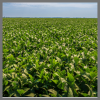
Recently, a new variety of high-oil soybean patented as PHOTOSEED has been developed, but there are no data for the nutritional value of the de-oiled co-product from this variety. The hypothesis of this experiment was that the digestibility of energy and nutrients in soybean expellers produced from the new variety of high-oil soybeans (SBE-HO) is not different from that of soybean expellers produced from conventional soybeans (SBE-CV).
Read more
-

May
22
Interpretive Summary: Effects of increasing levels of benzoic acid fed to pigs on nitrogen utilization and metabolism affecting growth performance, ammonia emissions, and carcass characteristics
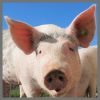
The use of antibiotics as growth promoters has been phased out due to concerns over microbial resistance, creating a demand for alternatives in pig feed. Benzoic acid (BA) has gained attention through its antimicrobial effects in the intestine, potentially improving nitrogen utilization, reducing diarrhea, and ultimately enhancing growth and carcass characteristics in pigs.
Read more
-

May
22
Interpretive Summary: Estrogen promotes autophagy in the mammary epithelial cells of dairy sheep via the CXCL12/CXCR4 axis
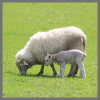
Sheep milk is in increasing demand worldwide for its unique nutrients. Mammary physiological processes and lactation performance are regulated by hormones, and studies have shown that estrogen has the ability to regulate autophagy during mammary development, but the specific mechanism is not clear.
Read more
-

May
22
Interpretive Summary: Effects of omega-3 polyunsaturated fatty acid supplementation to first-calf beef heifers during late gestation on offspring physiology and performance
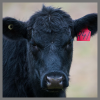
Polyunsaturated fatty acids (PUFA), particularly omega-3 fatty acids, play a crucial role in various body functions related to reproduction, health, and growth in livestock. This study focused on supplementing omega-3 fatty acids to first-calf beef heifers during the last trimester of gestation. The results showed that omega-3 supplementation had a positive impact on immunoglobulin G (IgG) concentration in colostrum and offspring circulation, indicating improved maternal antibody transfer.
Read more
-

May
22
Interpretive Summary: Body reserves dynamics of suckling ewes across successive production cycles under outdoor and indoor contrasting farming system conditions
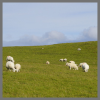
Body reserves (BR) are vital for ruminants, enabling them to adapt to energy demands during key physiological stages (PhySt) and changing environments. This study assessed how farming systems (FS; indoor vs. outdoor) affect BR dynamics in Romane meat ewes with shared genetics.
Read more
-

May
22
ASAS Foundation Week - Taking Stock - Special Edition - May 22, 2025

ASAS Foundation Week - Taking Stock - Special Edition
May 22, 2025
Read more
-

May
21
ASAS Foundation Week - Taking Stock - Special Edition - May 21, 2025

ASAS Foundation Week - Taking Stock - Special Edition
May 21, 2025
Read more
-

May
20
ASAS Foundation Week - Taking Stock - Special Edition - May 20, 2025

ASAS Foundation Week - Taking Stock - Special Edition
May 20, 2025
Read more
-

May
19
ASAS Foundation Week - Taking Stock - Special Edition - May 19, 2025

ASAS Foundation Week - Taking Stock - Special Edition
May 19, 2025
Read more
-

May
15
Interpretive Summary: Farmers’ attitudes toward animal welfare

Farm animal production has undergone significant transformations in the last 60 years, associated with globalization, population growth, increasing affluence, and the resulting demand for animal products. Altogether, this has driven a significant growth in the global number of animals and continuous changes in the production systems in response to different environmental, social, and economic challenges.
Read more
-

May
15
Interpretive Summary: Welfare perspectives on the management of pregnant, nonlactating dairy cattle during the winter months in pasture-based systems
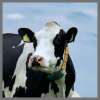
Pasture-based dairy systems aim to match feed demand with home-grown feed supply by maximizing the amount of pasture in the cows’ diet. This is achieved through concentrated (or ‘compact’) seasonal calving where cows are typically dried off together in autumn and calve in late winter/early spring within a short timeframe (e.g., 78% within 6 wk) so that peak milk production coincides with peak grass growth and by maintaining cows at grass for extended periods (Kelly et al., 2020). While such systems were traditionally seen as extensive, intensification has occurred, leading to discussions about welfare challenges (Mee and Boyle, 2020).
Read more
-

May
15
Interpretive Summary: Heat stress amelioration for pasture-based dairy cattle: challenges and opportunities
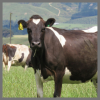
Societal scrutiny of animal welfare in food production systems is intensifying. In the dairy sector, the impact of heat stress on cow productivity, health, and welfare is a growing global concern, particularly with increasing temperatures and weather variability predicted to become more extreme (Nguyen et al., 2016). Excessive heat can negatively impact biological functioning including milk production, health, and reproduction (Kadzere et al., 2002), and in severe circumstances, it can cause suffering, reduce quality of life, or even lead to death (Polsky and von Keyserlingk, 2017).
Read more
-

May
15
Interpretive Summary: Welfare implications of poor gilt selection standards in commercial pig production systems
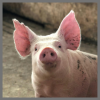
Gilt selection has always been a critical task in the global pig industry. From local breeders within herd book farms to selection specialists within large integrated multisite producers, having a quality selection of incoming great-grand-parent, grand-parent, and parent animals is a core baseline requirement and fundamental for generational success. Key aspects of solid selection have changed over the years, mainly driven by the increased understanding that selection as an outcome of youngstock development achieves desired production results (Patterson and Foxcroft, 2019).
Read more
-

May
15
Interpretive Summary: An examination of the factors that influence consumer intention to purchase higher welfare meat and milk

There is growing societal concern for farm animal welfare and interest in production conditions (European Commission, 2022). In many countries, quality assurance labels have been established to communicate that products have been produced from animals reared on higher welfare-certified farms. In this way, consumers can choose to play a role in driving farm animal welfare improvements through their product purchases (Christensen et al., 2019).
Read more
-

May
15
Interpretive Summary: A framework for a comprehensive animal welfare label: scientific, logistic, and ethical challenges

At least nine of the 27 EU member states have national food labeling schemes with animal welfare claims, and there is a growing plethora of private animal welfare labels (AWL), e.g., as part of the marketing strategy of retail companies (Lundmark et al., 2018; EC, 2022; Stygar et al., 2022). The impact of these labels on the welfare of farmed animals is generally considered disappointing (but see Mullan et al., 2016, 2022). The multitude of labels often confuse the consumer, and there seems to be a clear need for simplifying the existing state of play of these labeling schemes (BEUC, 2021; Forbes, 2021; Promarket, 2021; EC, 2022).
Read more
-

May
08
Interpretive Summary: Examination of the role of the rumen in zinc metabolism

Zinc (Zn) is an essential trace mineral that plays a crucial role in maintaining intestinal barrier function and structure. This research aimed to expand our understanding of the role of the rumen epithelium in Zn metabolism in ruminants. Using 4 ruminally fistulated steers, 2 experiments were conducted to evaluate Zn’s disappearance from the rumen.
Read more
-

May
08
Interpretive Summary: Predicting dry matter intake in cattle at scale using gradient boosting regression techniques and Gaussian process boosting regression with Shapley additive explanation explainable artificial intelligence...

Reducing the ecological footprint of animal agriculture is crucial for sustainable precision agriculture. Accurately predicting dry matter intake (DMI) in cattle is a key strategy to achieve this goal. In this study, we utilized animal intake data with climatic data to predict the dry matter intake using advanced machine learning (ML) models including Gaussian Process Boosting (GPBoost).
Read more
-

May
08
Interpretive Summary: Effects of a fiber-degrading enzyme on ileal digestibility of amino acids and fiber and total tract digestibility of energy and fiber in growing pigs fed diets with high level of corn distillers grains with solubles
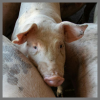
As bioethanol production grows, corn distillers dried grains with solubles (cDDGS) have become a popular, cost-effective feed ingredient for pigs, replacing corn and soybean meal. However, cDDGS are high in fiber, which can reduce nutrient digestibility in pigs. Supplementation of exogenous enzymes like xylanase and cellulase to cDDGS diets can improve nutrient absorption and feed efficiency by breaking down these fibers and altering the gut environment.
Read more
-

May
08
Interpretive Summary: Effects of dietary metabolizable energy density and inclusion of oxidized soybean oil on the growth performance, serum biochemical parameters, redox status, and wooden breast incidence of broilers
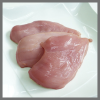
Dietary nutrients not only play a crucial role in growth and pectoralis muscle production of broilers but also are associated with the occurrence of pectoralis myopathies. Soybean oil is commonly added to animal diets to increase energy density.
Read more
-

May
08
Interpretive Summary: The effects of a plant-based and a plant- and marine-based n-3 oil supplement on behavioral reactivity, heart rate variability, and plasma fatty acid profile in young healthy horses
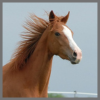
Reactive behaviors in horses can impact the welfare and safety of both the horse and the handler. Reductions in reactivity have been observed in horses-fed diets with increased fat and low starch and sugar, but the effects of specific fatty acids on reactive behaviors in horses is unknown. Therefore, the objective of the study is to investigate the impacts of camelina oil (providing the plant-based α-linolenic acid, ALA) and a mix of camelina and algae oil (providing the marine-based eicosapentaenoic acid, EPA, and docosahexaenoic acid, DHA) on plasma fatty acids, heart rate variability, and reactive behaviors.
Read more
 MayInterpretive Summary: Digestibility of energy and nutrients in soybean expellers produced from conventional or high-oil varieties of soybeans and fed to growing pigs
MayInterpretive Summary: Digestibility of energy and nutrients in soybean expellers produced from conventional or high-oil varieties of soybeans and fed to growing pigs Recently, a new variety of high-oil soybean patented as PHOTOSEED has been developed, but there are no data for the nutritional value of the de-oiled co-product from this variety. The hypothesis of this experiment was that the digestibility of energy and nutrients in soybean expellers produced from the new variety of high-oil soybeans (SBE-HO) is not different from that of soybean expellers produced from conventional soybeans (SBE-CV).
Recently, a new variety of high-oil soybean patented as PHOTOSEED has been developed, but there are no data for the nutritional value of the de-oiled co-product from this variety. The hypothesis of this experiment was that the digestibility of energy and nutrients in soybean expellers produced from the new variety of high-oil soybeans (SBE-HO) is not different from that of soybean expellers produced from conventional soybeans (SBE-CV). MayInterpretive Summary: Effects of increasing levels of benzoic acid fed to pigs on nitrogen utilization and metabolism affecting growth performance, ammonia emissions, and carcass characteristics
MayInterpretive Summary: Effects of increasing levels of benzoic acid fed to pigs on nitrogen utilization and metabolism affecting growth performance, ammonia emissions, and carcass characteristics The use of antibiotics as growth promoters has been phased out due to concerns over microbial resistance, creating a demand for alternatives in pig feed. Benzoic acid (BA) has gained attention through its antimicrobial effects in the intestine, potentially improving nitrogen utilization, reducing diarrhea, and ultimately enhancing growth and carcass characteristics in pigs.
The use of antibiotics as growth promoters has been phased out due to concerns over microbial resistance, creating a demand for alternatives in pig feed. Benzoic acid (BA) has gained attention through its antimicrobial effects in the intestine, potentially improving nitrogen utilization, reducing diarrhea, and ultimately enhancing growth and carcass characteristics in pigs. MayInterpretive Summary: Estrogen promotes autophagy in the mammary epithelial cells of dairy sheep via the CXCL12/CXCR4 axis
MayInterpretive Summary: Estrogen promotes autophagy in the mammary epithelial cells of dairy sheep via the CXCL12/CXCR4 axis Sheep milk is in increasing demand worldwide for its unique nutrients. Mammary physiological processes and lactation performance are regulated by hormones, and studies have shown that estrogen has the ability to regulate autophagy during mammary development, but the specific mechanism is not clear.
Sheep milk is in increasing demand worldwide for its unique nutrients. Mammary physiological processes and lactation performance are regulated by hormones, and studies have shown that estrogen has the ability to regulate autophagy during mammary development, but the specific mechanism is not clear. MayInterpretive Summary: Effects of omega-3 polyunsaturated fatty acid supplementation to first-calf beef heifers during late gestation on offspring physiology and performance
MayInterpretive Summary: Effects of omega-3 polyunsaturated fatty acid supplementation to first-calf beef heifers during late gestation on offspring physiology and performance Polyunsaturated fatty acids (PUFA), particularly omega-3 fatty acids, play a crucial role in various body functions related to reproduction, health, and growth in livestock. This study focused on supplementing omega-3 fatty acids to first-calf beef heifers during the last trimester of gestation. The results showed that omega-3 supplementation had a positive impact on immunoglobulin G (IgG) concentration in colostrum and offspring circulation, indicating improved maternal antibody transfer.
Polyunsaturated fatty acids (PUFA), particularly omega-3 fatty acids, play a crucial role in various body functions related to reproduction, health, and growth in livestock. This study focused on supplementing omega-3 fatty acids to first-calf beef heifers during the last trimester of gestation. The results showed that omega-3 supplementation had a positive impact on immunoglobulin G (IgG) concentration in colostrum and offspring circulation, indicating improved maternal antibody transfer. MayInterpretive Summary: Body reserves dynamics of suckling ewes across successive production cycles under outdoor and indoor contrasting farming system conditions
MayInterpretive Summary: Body reserves dynamics of suckling ewes across successive production cycles under outdoor and indoor contrasting farming system conditions Body reserves (BR) are vital for ruminants, enabling them to adapt to energy demands during key physiological stages (PhySt) and changing environments. This study assessed how farming systems (FS; indoor vs. outdoor) affect BR dynamics in Romane meat ewes with shared genetics.
Body reserves (BR) are vital for ruminants, enabling them to adapt to energy demands during key physiological stages (PhySt) and changing environments. This study assessed how farming systems (FS; indoor vs. outdoor) affect BR dynamics in Romane meat ewes with shared genetics. MayASAS Foundation Week - Taking Stock - Special Edition - May 22, 2025
MayASAS Foundation Week - Taking Stock - Special Edition - May 22, 2025 ASAS Foundation Week - Taking Stock - Special Edition
ASAS Foundation Week - Taking Stock - Special Edition MayASAS Foundation Week - Taking Stock - Special Edition - May 21, 2025
MayASAS Foundation Week - Taking Stock - Special Edition - May 21, 2025 ASAS Foundation Week - Taking Stock - Special Edition
ASAS Foundation Week - Taking Stock - Special Edition MayASAS Foundation Week - Taking Stock - Special Edition - May 20, 2025
MayASAS Foundation Week - Taking Stock - Special Edition - May 20, 2025 ASAS Foundation Week - Taking Stock - Special Edition
ASAS Foundation Week - Taking Stock - Special Edition MayASAS Foundation Week - Taking Stock - Special Edition - May 19, 2025
MayASAS Foundation Week - Taking Stock - Special Edition - May 19, 2025 ASAS Foundation Week - Taking Stock - Special Edition
ASAS Foundation Week - Taking Stock - Special Edition MayInterpretive Summary: Farmers’ attitudes toward animal welfare
MayInterpretive Summary: Farmers’ attitudes toward animal welfare Farm animal production has undergone significant transformations in the last 60 years, associated with globalization, population growth, increasing affluence, and the resulting demand for animal products. Altogether, this has driven a significant growth in the global number of animals and continuous changes in the production systems in response to different environmental, social, and economic challenges.
Farm animal production has undergone significant transformations in the last 60 years, associated with globalization, population growth, increasing affluence, and the resulting demand for animal products. Altogether, this has driven a significant growth in the global number of animals and continuous changes in the production systems in response to different environmental, social, and economic challenges. MayInterpretive Summary: Welfare perspectives on the management of pregnant, nonlactating dairy cattle during the winter months in pasture-based systems
MayInterpretive Summary: Welfare perspectives on the management of pregnant, nonlactating dairy cattle during the winter months in pasture-based systems Pasture-based dairy systems aim to match feed demand with home-grown feed supply by maximizing the amount of pasture in the cows’ diet. This is achieved through concentrated (or ‘compact’) seasonal calving where cows are typically dried off together in autumn and calve in late winter/early spring within a short timeframe (e.g., 78% within 6 wk) so that peak milk production coincides with peak grass growth and by maintaining cows at grass for extended periods (Kelly et al., 2020). While such systems were traditionally seen as extensive, intensification has occurred, leading to discussions about welfare challenges (Mee and Boyle, 2020).
Pasture-based dairy systems aim to match feed demand with home-grown feed supply by maximizing the amount of pasture in the cows’ diet. This is achieved through concentrated (or ‘compact’) seasonal calving where cows are typically dried off together in autumn and calve in late winter/early spring within a short timeframe (e.g., 78% within 6 wk) so that peak milk production coincides with peak grass growth and by maintaining cows at grass for extended periods (Kelly et al., 2020). While such systems were traditionally seen as extensive, intensification has occurred, leading to discussions about welfare challenges (Mee and Boyle, 2020). MayInterpretive Summary: Heat stress amelioration for pasture-based dairy cattle: challenges and opportunities
MayInterpretive Summary: Heat stress amelioration for pasture-based dairy cattle: challenges and opportunities Societal scrutiny of animal welfare in food production systems is intensifying. In the dairy sector, the impact of heat stress on cow productivity, health, and welfare is a growing global concern, particularly with increasing temperatures and weather variability predicted to become more extreme (Nguyen et al., 2016). Excessive heat can negatively impact biological functioning including milk production, health, and reproduction (Kadzere et al., 2002), and in severe circumstances, it can cause suffering, reduce quality of life, or even lead to death (Polsky and von Keyserlingk, 2017).
Societal scrutiny of animal welfare in food production systems is intensifying. In the dairy sector, the impact of heat stress on cow productivity, health, and welfare is a growing global concern, particularly with increasing temperatures and weather variability predicted to become more extreme (Nguyen et al., 2016). Excessive heat can negatively impact biological functioning including milk production, health, and reproduction (Kadzere et al., 2002), and in severe circumstances, it can cause suffering, reduce quality of life, or even lead to death (Polsky and von Keyserlingk, 2017). MayInterpretive Summary: Welfare implications of poor gilt selection standards in commercial pig production systems
MayInterpretive Summary: Welfare implications of poor gilt selection standards in commercial pig production systems Gilt selection has always been a critical task in the global pig industry. From local breeders within herd book farms to selection specialists within large integrated multisite producers, having a quality selection of incoming great-grand-parent, grand-parent, and parent animals is a core baseline requirement and fundamental for generational success. Key aspects of solid selection have changed over the years, mainly driven by the increased understanding that selection as an outcome of youngstock development achieves desired production results (Patterson and Foxcroft, 2019).
Gilt selection has always been a critical task in the global pig industry. From local breeders within herd book farms to selection specialists within large integrated multisite producers, having a quality selection of incoming great-grand-parent, grand-parent, and parent animals is a core baseline requirement and fundamental for generational success. Key aspects of solid selection have changed over the years, mainly driven by the increased understanding that selection as an outcome of youngstock development achieves desired production results (Patterson and Foxcroft, 2019). MayInterpretive Summary: An examination of the factors that influence consumer intention to purchase higher welfare meat and milk
MayInterpretive Summary: An examination of the factors that influence consumer intention to purchase higher welfare meat and milk There is growing societal concern for farm animal welfare and interest in production conditions (European Commission, 2022). In many countries, quality assurance labels have been established to communicate that products have been produced from animals reared on higher welfare-certified farms. In this way, consumers can choose to play a role in driving farm animal welfare improvements through their product purchases (Christensen et al., 2019).
There is growing societal concern for farm animal welfare and interest in production conditions (European Commission, 2022). In many countries, quality assurance labels have been established to communicate that products have been produced from animals reared on higher welfare-certified farms. In this way, consumers can choose to play a role in driving farm animal welfare improvements through their product purchases (Christensen et al., 2019). MayInterpretive Summary: A framework for a comprehensive animal welfare label: scientific, logistic, and ethical challenges
MayInterpretive Summary: A framework for a comprehensive animal welfare label: scientific, logistic, and ethical challenges At least nine of the 27 EU member states have national food labeling schemes with animal welfare claims, and there is a growing plethora of private animal welfare labels (AWL), e.g., as part of the marketing strategy of retail companies (Lundmark et al., 2018; EC, 2022; Stygar et al., 2022). The impact of these labels on the welfare of farmed animals is generally considered disappointing (but see Mullan et al., 2016, 2022). The multitude of labels often confuse the consumer, and there seems to be a clear need for simplifying the existing state of play of these labeling schemes (BEUC, 2021; Forbes, 2021; Promarket, 2021; EC, 2022).
At least nine of the 27 EU member states have national food labeling schemes with animal welfare claims, and there is a growing plethora of private animal welfare labels (AWL), e.g., as part of the marketing strategy of retail companies (Lundmark et al., 2018; EC, 2022; Stygar et al., 2022). The impact of these labels on the welfare of farmed animals is generally considered disappointing (but see Mullan et al., 2016, 2022). The multitude of labels often confuse the consumer, and there seems to be a clear need for simplifying the existing state of play of these labeling schemes (BEUC, 2021; Forbes, 2021; Promarket, 2021; EC, 2022). MayInterpretive Summary: Examination of the role of the rumen in zinc metabolism
MayInterpretive Summary: Examination of the role of the rumen in zinc metabolism Zinc (Zn) is an essential trace mineral that plays a crucial role in maintaining intestinal barrier function and structure. This research aimed to expand our understanding of the role of the rumen epithelium in Zn metabolism in ruminants. Using 4 ruminally fistulated steers, 2 experiments were conducted to evaluate Zn’s disappearance from the rumen.
Zinc (Zn) is an essential trace mineral that plays a crucial role in maintaining intestinal barrier function and structure. This research aimed to expand our understanding of the role of the rumen epithelium in Zn metabolism in ruminants. Using 4 ruminally fistulated steers, 2 experiments were conducted to evaluate Zn’s disappearance from the rumen. MayInterpretive Summary: Predicting dry matter intake in cattle at scale using gradient boosting regression techniques and Gaussian process boosting regression with Shapley additive explanation explainable artificial intelligence...
MayInterpretive Summary: Predicting dry matter intake in cattle at scale using gradient boosting regression techniques and Gaussian process boosting regression with Shapley additive explanation explainable artificial intelligence... Reducing the ecological footprint of animal agriculture is crucial for sustainable precision agriculture. Accurately predicting dry matter intake (DMI) in cattle is a key strategy to achieve this goal. In this study, we utilized animal intake data with climatic data to predict the dry matter intake using advanced machine learning (ML) models including Gaussian Process Boosting (GPBoost).
Reducing the ecological footprint of animal agriculture is crucial for sustainable precision agriculture. Accurately predicting dry matter intake (DMI) in cattle is a key strategy to achieve this goal. In this study, we utilized animal intake data with climatic data to predict the dry matter intake using advanced machine learning (ML) models including Gaussian Process Boosting (GPBoost). MayInterpretive Summary: Effects of a fiber-degrading enzyme on ileal digestibility of amino acids and fiber and total tract digestibility of energy and fiber in growing pigs fed diets with high level of corn distillers grains with solubles
MayInterpretive Summary: Effects of a fiber-degrading enzyme on ileal digestibility of amino acids and fiber and total tract digestibility of energy and fiber in growing pigs fed diets with high level of corn distillers grains with solubles As bioethanol production grows, corn distillers dried grains with solubles (cDDGS) have become a popular, cost-effective feed ingredient for pigs, replacing corn and soybean meal. However, cDDGS are high in fiber, which can reduce nutrient digestibility in pigs. Supplementation of exogenous enzymes like xylanase and cellulase to cDDGS diets can improve nutrient absorption and feed efficiency by breaking down these fibers and altering the gut environment.
As bioethanol production grows, corn distillers dried grains with solubles (cDDGS) have become a popular, cost-effective feed ingredient for pigs, replacing corn and soybean meal. However, cDDGS are high in fiber, which can reduce nutrient digestibility in pigs. Supplementation of exogenous enzymes like xylanase and cellulase to cDDGS diets can improve nutrient absorption and feed efficiency by breaking down these fibers and altering the gut environment. MayInterpretive Summary: Effects of dietary metabolizable energy density and inclusion of oxidized soybean oil on the growth performance, serum biochemical parameters, redox status, and wooden breast incidence of broilers
MayInterpretive Summary: Effects of dietary metabolizable energy density and inclusion of oxidized soybean oil on the growth performance, serum biochemical parameters, redox status, and wooden breast incidence of broilers Dietary nutrients not only play a crucial role in growth and pectoralis muscle production of broilers but also are associated with the occurrence of pectoralis myopathies. Soybean oil is commonly added to animal diets to increase energy density.
Dietary nutrients not only play a crucial role in growth and pectoralis muscle production of broilers but also are associated with the occurrence of pectoralis myopathies. Soybean oil is commonly added to animal diets to increase energy density. MayInterpretive Summary: The effects of a plant-based and a plant- and marine-based n-3 oil supplement on behavioral reactivity, heart rate variability, and plasma fatty acid profile in young healthy horses
MayInterpretive Summary: The effects of a plant-based and a plant- and marine-based n-3 oil supplement on behavioral reactivity, heart rate variability, and plasma fatty acid profile in young healthy horses Reactive behaviors in horses can impact the welfare and safety of both the horse and the handler. Reductions in reactivity have been observed in horses-fed diets with increased fat and low starch and sugar, but the effects of specific fatty acids on reactive behaviors in horses is unknown. Therefore, the objective of the study is to investigate the impacts of camelina oil (providing the plant-based α-linolenic acid, ALA) and a mix of camelina and algae oil (providing the marine-based eicosapentaenoic acid, EPA, and docosahexaenoic acid, DHA) on plasma fatty acids, heart rate variability, and reactive behaviors.
Reactive behaviors in horses can impact the welfare and safety of both the horse and the handler. Reductions in reactivity have been observed in horses-fed diets with increased fat and low starch and sugar, but the effects of specific fatty acids on reactive behaviors in horses is unknown. Therefore, the objective of the study is to investigate the impacts of camelina oil (providing the plant-based α-linolenic acid, ALA) and a mix of camelina and algae oil (providing the marine-based eicosapentaenoic acid, EPA, and docosahexaenoic acid, DHA) on plasma fatty acids, heart rate variability, and reactive behaviors.



